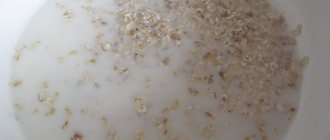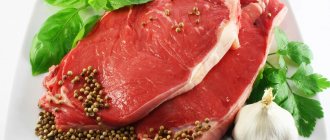What kind of fish is this
Mackerel has an elongated shape. The head tapers towards the oral cavity. The tail is thin, 6 cm long. The widest place between the back and belly is no more than 30 cm. A standard fish has the following parameters: 60 cm in length and 12 cm in width. Mackerel is colored gray with a silver tint. It has transverse dark stripes on its bluish back.
The fish has a wide habitat in the world's oceans. Species living in different places differ in size and color:
- The African species lives in the central and eastern parts of the Atlantic Ocean and the seas included in its basin. The species is found in the southern part of the Black Sea. Warm waters and a good food supply allow the fish to grow to their maximum size.
- The habitat of the Japanese variety is the Pacific seas from Japan to Australia. Schools of fish enter the Indian Ocean. This is the smallest species - weight does not exceed 350 g. One of the differences is the specific blue color.
- Australian mackerel is found in the Indian and Pacific oceans. A distinctive feature is the greenish back with a bluish tint and a silver-white belly. The stripes on the back are preserved, but have a discontinuous structure.
- The Atlantic variety inhabits the northern part of the Atlantic Basin. In summer it goes far north, all the way to the Barents Sea. She has a white belly and no swim bladder at all. This is the main commercial species of Russian fishermen.
Types of mackerel
There are 4 types of mackerel:
- Australian. It lives in the Pacific and Indian oceans at depths of up to 300 meters. Maximum grows up to 50 cm.
- African. It is found in the Atlantic Ocean, most common in the southern Mediterranean. The most prolific of its kind. Grows up to 30 cm.
- Japanese. Lives off the coast of the Kuril Islands, migrates along West Africa and California. Reaches a length of 64 cm. Lives in warm water at an average temperature of 25–27 degrees.
- Atlantic. Distributed in the northern part of the Atlantic Ocean. Most often found on store shelves in the CIS countries. Stretches up to 30–60 cm.
Australian or blue mackerel (Scomber australasicus)
African (Scomber colias)
Japanese or Pacific (Scomber japonicus)
Atlantic (Scomber scombrus)
Based on habitat and catch, mackerel is conventionally divided into northern and southern varieties. Individuals differ in fat content. Northern fish has more calories, the meat is softer and more tender.
Chemical composition of mackerel
The chemical composition of mackerel is based on proteins and fats. It contains absolutely no carbohydrates. But there is ash - a natural adsorbent that helps cleanse the human body. Oily fish: it contains about 21% fat. This is due to the content of 75 mg of cholesterol per 100 g of weight. This weight accounts for 23.85 g of protein - this is 32% of the norm for an adult per day.
The composition is distinguished by a large number of amino acids. These substances (there are 14 of them in the chemical composition of fish) play an important role in the human body:
- ensure normal development of the body;
- are the basis for protein reproduction;
- take part in providing cells with oxygen;
- stimulate metabolic processes;
- improve the condition of nerve cells.
Some amino acids enter the human body only with food. All of them are present in mackerel.
How many calories are in mackerel
The calorie content of mackerel per 100 grams is 262 kcal. This indicator applies to fresh fish. In culinary performances, calorie content depends on the cooking method.
| Cooking method | Calorie content per 100 g of weight |
| Baked | 194 kcal |
| Hot smoking | 317 kcal |
| Cold smoking | 150 kcal |
| Salty | 194 kcal |
| Fried | 257 kcal |
| Boiled | 211 kcal |
In what form is mackerel useful for dieting?
Baked (in foil, in a sleeve). A simple and quick method that preserves most of the beneficial elements without turning fat into carcinogens, and emphasizes the special taste of mackerel.
Nutritionists do not recommend using oil or fat for baking, so as not to increase the calorie content of the dish, which will average 190 kcal per 100 grams of the finished product.
You can also reduce the number of calories by removing excess fat during the cooking process by making small holes in the foil.
Baked fish goes best with baked or boiled vegetables. Before serving, you can sprinkle the mackerel with lemon juice - this will make it even tastier. Recommended 1-2 servings per week (1 serving – 75 grams).
Boiled. It may seem surprising to some, but this is the healthiest way to cook fish. In this way, the largest amount of valuable substances is preserved and is even more easily absorbed by the body.
To prepare, use a small amount of salted water (enough to cover the fish), a little black pepper and bay leaf to bring out the flavor of the mackerel.
Cooking time is only 15-20 minutes, calorie content - 211 kcal per 100 grams of product.
When dieting, it is also recommended to enjoy boiled mackerel no more than 2 times a week.
For a couple. Mackerel prepared in this way retains the same 190 kcal per 100 grams as baked; it is prepared by first grating with ground black pepper, and salt is added before serving.
Fried. This cooking method is the most “unhealthy”, since fried fish of any kind is difficult to digest by the body and loses the lion’s share of all useful components.
Fried mackerel is strictly contraindicated for those who are watching their weight and proper nutrition. When frying already fatty mackerel in oil, the calorie content increases significantly (up to 218-257 kcal per 100 grams).
In addition, during the frying process, carcinogens are formed that poison the body.
Smoked. Hot and cold smoked mackerel can also hardly be called a healthy product.
- Hot smoking increases calorie content to 250-317 kcal per 100 g.
- Cold food, with a relatively low calorie content (150-180 kcal per 100 g), carries the risk of infection with opisthorchiasis (as a result of poor salting of fish) and damage to the pancreas.
- In the case of smokeless smoking (processing with so-called liquid smoke), fish meat is full of carcinogens, coloring and flavoring chemicals.
Therefore, nutritionists call for minimizing the consumption of smoked fish.
Fish diet: menu for 7 and 10 days
Salty. The calorie content of salted mackerel is 194 kcal per 100 g of product.
The most important thing that experts pay attention to is that salty foods, in particular fish, prevent the removal of water from the body.
A piece or two of salted mackerel will not cause harm to the body on a diet, but you should not eat this type of fish regularly, since there will be more harm than good.
It should also be remembered that it is better to eat a piece of salty “delicacy” in the morning or for lunch, but not at night.
Canned . The calorie content of canned mackerel ranges from 75 to 350 calories. Many dishes are prepared from canned fish, including low-calorie first and second courses allowed for weight loss, salads, and sandwich spreads.
Useful properties of mackerel
Thanks to a wide range of useful substances, this fish has a beneficial effect on the human body:
- supports human immune strength;
- reduces the risk of tumors, helps in the fight against cancer;
- helps improve vision;
- stimulates metabolism;
- regulates hormonal levels;
- has an analgesic effect, helps reduce headaches and joint pain;
- inhibits the formation of cholesterol deposits in blood vessels;
- helps improve blood circulation;
- improves memory;
- removes toxic elements from the body;
- prevents atherosclerosis.
The benefits of mackerel for women
This fish is especially useful for the female body. Female oncology is becoming the scourge of our time. The amino acids contained in mackerel (Omega-3 and Omega-6) help strengthen the immune system and prevent cancer. The benefits of vitamin D have been known for a long time. It participates in the formation of bone tissue, normalizes mineral metabolism, and improves overall well-being.
Vitamin B12 (cobalamin) keeps iron in the blood cells, preventing iron deficiency. Vitamin E is called the women's vitamin. It is involved in the formation of collagen and elastin. Women who have a sufficient amount of this vitamin in their bodies can be seen from afar. Their skin glows with youth and freshness.
Mackerel during pregnancy and breastfeeding
Fresh mackerel is very useful for pregnant women. The amino acids it contains help the fetus to develop properly and prevent rickets. Vitamin D promotes the development of muscles and bones during the period of prenatal formation. Vitamin E controls the proper development of the baby's nervous system. Omega-3 and Omega-6 acids are responsible for the full formation of brain tissue and the body’s resistance to external influences.
The minerals contained in this fish bring undeniable benefits:
- phosphorus strengthens bone tissue;
- zinc supports the formation of leukocytes, participates in strengthening the body’s protective functions;
- potassium stimulates cardiac activity;
- manganese suppresses free radicals, supports blood clotting;
- Selenium increases the body's resistance to viruses and bacteria.
Pregnant women should consume boiled mackerel more often. Can be baked in the oven with vegetables. Smoked mackerel will also not cause harm to pregnant women.
Attention! If after eating mackerel you feel heaviness in the stomach or heartburn, then it is better to refuse this delicacy.
Mackerel will bring undeniable benefits to a nursing mother. All the beneficial substances that this product is rich in will enter the baby’s body with mother’s milk.
What are the benefits of mackerel for men?
This fish is especially valuable for men due to minerals such as selenium and zinc. These elements are involved in the formation of the male hormone testosterone. Omega acids stimulate potency and have a beneficial effect on procreation.
Fish for weight loss
The product contains Omega-3 amino acid, only seafood has so much of it. Fish for the diet is useful not only for its low calorie content, but also for its large list of useful microelements, for example, phosphorus and iodine. This makes seafood extremely important for those who develop hypertension, atherosclerosis, and coronary heart disease. Thanks to amino acids, microelements, and vitamins, a person receives a huge amount of useful substances that help lose weight. A fish diet for weight loss has the following positive aspects in addition to combating obesity:
- significantly reduces the risk of angina pectoris, heart disease, eliminates blood clots in the vascular system, which can become sclerotic plaques;
- fish has antitumor properties, reducing the likelihood of prostate, intestinal, and breast cancer;
- Regular consumption of fish products strengthens the immune system;
- The fish diet shows the fastest weight loss compared to other menu options for weight loss.
Which fish is suitable for diet
Not all seafood is equal in terms of calories and fat content. When losing weight, fish should provide maximum protein and minimum calories. Nutritionists recommend periodically changing the type so that the body receives all the substances necessary for high-quality functioning. Some varieties turn out to be fattier than pork. All dietary fish is divided into three main groups:
- Fatty (more than 8%) – this includes sturgeon and all varieties of this group, salmon, fatty herring, mackerel, eel, halibut. This group has a calorie content of up to 250 kcal/100 g. For comparison, lean pork contains only 120 kcal.
- Low-fat (4-8%) - this group includes: pike perch, low-fat herring, carp, catfish, pink salmon, carp, catfish, crucian carp, trout, sea bass, chum salmon, tuna, horse mackerel. The calorie content of these products is in the region of 80-100 kcal/100 g.
- Low-fat (up to 4%) - considered flounder, pollock, bream, cod, anchovy, pike, carp, hake, navaga, river perch. Calorie content is 60-90 kcal/100 g.
Which fish is the healthiest for weight loss?
The most useful for achieving results if you want to lose weight will be varieties with a minimum amount of calories. You can eat such foods in large quantities so as not to feel hungry. These seafood are used in many diets because they help you feel full and are quickly digested. The healthiest fish for weight loss is:
- pike;
- cod;
- pollock;
- hake and other white fish with minimal fat content.
Can children eat mackerel?
Seafood dishes are easy to digest, so they can be used in baby food. But it is worth remembering that mackerel is an oily fish. A child’s body achieves normal formation of the digestive system only by the age of three. At what age can mackerel be given to a child? Precisely from the age of three. This product contains a lot of complete protein, useful for the growth of a child's body.
Children need to cook mackerel separately. You should strive to choose dishes that reduce the calorie content of fish and limit the amount of fat.
Eating mackerel is contraindicated for children when:
- they cannot tolerate fish oil,
- have diseases of the digestive or excretory system.
We recommend reading: What are the benefits of fish oil in capsules, instructions for use, reviews
Warning! Mackerel should be given to children with caution - this fish tends to accumulate heavy metals. 70 grams per week is enough for the normal growth and development of the baby. Preference should be given to boiled and stewed fish.
Mackerel for weight loss
You can't think of weight loss as just weight loss. This is a process of changing lifestyle and eating habits. To normalize weight, you need to eat food that enriches the body with building materials. From this point of view, mackerel is useful for weight loss. The microelements it contains enrich the body and normalize metabolic processes. Mackerel protein is well absorbed by humans.
You should pay attention to how mackerel is used during the diet. Only fresh or freshly frozen fish retains all the best qualities. If the fish is first defrosted and then frozen again, the nutritional value of the product drops significantly. Healthy fats decompose and become harmful.
Is it possible to eat mackerel for diabetes, gastritis and pancreatitis?
One of the main rules for eating fish for patients suffering from diabetes, gastritis and pancreatitis is that the fish should live in cold waters. From this point of view, the Atlantic variety is simply a storehouse of health. There are several restrictions that will allow people with gastrointestinal disorders to consume mackerel:
- You cannot eat fish caught in the fall. At this time of year, mackerel contains the highest amount of fat.
- You should not eat salted and smoked fish.
Preference should be given to steamed, baked and boiled dishes.
Contraindications, possible harm
Absolute contraindications to the use of the product are allergies to fish, intolerance to minerals and vitamins contained in meat. The benefits and harms of mackerel also depend on the method of preparation and fat content. For example, salted fish should not be consumed if you have kidney or heart pathologies, since when it is consumed, fluid retention occurs, swelling occurs, and a jump in blood pressure occurs.
It is dangerous for people with lipid breakdown disorders to eat mackerel caught in the fall or early winter. During this period it contains the most fat.
- Disorders of the stomach and intestines, nausea, heartburn, bloating. Occur due to the large amount of fats and proteins entering the body.
- Itching, rash, dizziness, weakness.
Doctors also say that consuming large amounts of seafood can lead to mercury poisoning, which penetrates the body of fish living in polluted waters. However, mackerel is a species that is not prone to accumulating harmful elements. In addition, it contains selenium, which can neutralize the effects of mercury.
Do they eat mackerel caviar?
No one has ever seen caviar in fish carcasses that go on sale. It's not available in banks either. Industrial fishing of mackerel is not carried out in breeding areas. She manages to successfully spawn before being caught. This is very good: the volume of industrial catch is growing from year to year, but this does not affect the quantity of fish. But what mackerel caviar tastes like and whether it can be eaten is something that the general public cannot find out. People living in East Asia use mackerel roe for food. They prepare pasta and other dishes from it.
The benefits and harms of smoked mackerel
The benefits of cold smoked mackerel are undeniable. When using it:
- digestion improves;
- metabolism is normalized;
- nerve cells are strengthened;
- hemoglobin increases;
- cholesterol is normalized;
- blood clots break;
- the process of cell reproduction improves;
- immunity is strengthened;
- memory improves.
The cold smoking process allows you to preserve all useful vitamins and microelements.
Smoked mackerel also has its contraindications. Smoking increases calorie content. This explains the limitation of its use. Another negative side of smoked mackerel is the absorption and retention of carcinogens.
Important! You should not eat mackerel cooked with liquid smoke - the finished product will contain harmful toxic substances.
The best way to prepare smoked fish is with a simple smoker. Eating smoked mackerel is dangerous for people with diseases of the digestive system.
Benefits for the body
The benefits of mackerel for women and men are equally great. This fish is great for weight loss. It is recommended to include it in the diet of children from an early age (but not earlier than 3 years) and even pregnant women are allowed to eat it.
The beneficial properties of fish affect health as follows:
- Vitamin B12 stimulates the saturation of cells with oxygen and improves fat metabolism.
- The bone skeleton is strengthened thanks to vitamin D, which is especially useful for the younger generation. However, in this case we are not talking about a salted, fried or smoked product. Preference should be given to stewed fish, steamed, boiled or baked in foil.
- The presence of phosphorus in fish has a positive effect on the full functioning of all systems.
- Thanks to the antioxidant properties of omega-6 and omega-3 fatty acids, cholesterol levels in the blood are normalized, the likelihood of developing cancer is reduced, and metabolism is accelerated, which is extremely useful for people and athletes who are losing weight.
- Mackerel acts as a prophylactic against atherosclerosis.
- Fish meat has a positive effect on the functioning of the brain (brain and spinal cord). In addition, regular use of the product has a positive effect on the condition of the teeth and mucous membranes, gives the skin a healthy tone and strengthens the hair follicles.
- Mackerel is suitable for the prevention and treatment of diseases of the musculoskeletal system, as well as for the prevention of diseases of the cardiovascular system.
- If you have a disease such as diabetes, it is recommended to eat steamed mackerel. This will help normalize blood sugar levels. In addition, the level of hemoglobin will increase, and the nervous system will become more stable.
© bukhta79 — stock.adobe.com
The benefits of eating cold and hot smoked mackerel are almost identical to those brought by stewed and baked fish. However, remember that saltiness and smoked foods should be consumed in moderation. Especially if we are talking about salted mackerel, which contributes to fluid retention in the body.
Note: For best results in losing weight or improving your health, it is recommended to eat fatty fish with light side dishes of vegetables.
Canned mackerel is also rich in vitamins and minerals, but in this form the product is often higher in calories, so we do not recommend consuming it too often.
Is salted and pickled mackerel healthy?
During the salting process, mackerel retains maximum nutrients. The benefits of this fish are described. You should pay attention to the problems that arise when using it:
- Salted mackerel should not be consumed by people with kidney disease. The diseased organ does not filter fluid well. Salt accumulates in the bladder, irritating it and leading to inflammation.
- Acetic acid is used for pickling. Excess of any acids has a negative effect on people with digestive problems. They require an alkaline diet, so pickled foods should be avoided.
The most preferred and safest option is lightly salted mackerel.
Basic rules of use
The selection and use of fish carcasses should be approached responsibly. Stale product or improperly prepared fish dishes can negatively affect metabolic processes.
To ensure a healthy diet, you should pay attention to the quality of mackerel when choosing it. The criteria for fish freshness are:
- pink gills;
- dense carcass;
- the presence of a shiny and light surface.
When choosing a steak or fillet, you should give preference to shiny pieces with light and transparent meat.
Thaw the fish in an open container and store in the refrigerator for no more than 1 day.
In dietary nutrition, the use of mackerel in boiled, baked or stewed form is encouraged. The best side dish for it would be boiled or baked vegetables.
The daily rate of use of mackerel for weight loss should not exceed 200 g. Children and the elderly are recommended to use the product no more than 2 times a week.
When on a fish diet, you should not forget that mackerel is not allowed for consumption if you have problems with the liver and pancreas. In such cases, it is better to introduce other varieties into the diet: low-fat herring, cod, pollock.
How to cook mackerel
When you hear the word mackerel, you think of a fatty, cold-smoked fish with a golden back. But mackerel allows you to prepare many healthier and nutritious dishes:
- Baked mackerel is useful for people who are overweight. It is very tasty baked with vegetables. The simplest option for a light and nutritious dinner is mackerel baked in a sleeve with potatoes.
- The benefits of boiled mackerel are undeniable for people with disorders of the digestive system. Excess fat will remain in the broth. Boiled mackerel goes well with potatoes. Rice would be an excellent side dish. A couple of tablespoons of broth will help improve the flavor of the side dish.
- Canned mackerel lasts longer. You should not buy canned food. The fish is rolled into tin cans, and they oxidize. You need to preserve it yourself. Pieces of fish seasoned with spices are placed in a glass jar and placed in the oven. The cooking time at a temperature of 200°C is 2 hours. It turns out mackerel in its own juice. This cooking method allows you to preserve all the properties of fresh fish. Homemade canned food lasts a long time in the refrigerator. They are consumed as an independent dish. Excellent dietary salads with canned mackerel. Fish soups are prepared on its basis.
Basic recipe for mackerel in the oven
Baking mackerel by wrapping it in foil is a culinary classic. It turns out fast, tasty and healthy. The dish can be made both for everyday use and for a special occasion. Perfect for children's diet.
To prepare you will need:
- fish carcass – 400 g;
- lemon – 1 medium size piece;
- onion – 1 medium head;
- parsley greens – 1 bunch;
- spices to choose from;
- aluminium foil.
Preparation:
- Clean the fish, cut off the head, tail and fins, cut open, gut and rinse thoroughly. Divide into fillets and dry with a napkin with good moisture absorption.
- Peel the onion, cut into rings or finely chop.
- Wash and chop the parsley.
- Cut the lemon into thin slices.
- Season the fish with spices. Transfer one fillet to foil, cover it with a layer of onion, then arrange the lemon slices. Sprinkle with herbs and cover with the other half of the fillet.
- Carefully wrap the stuffed fish in foil, transfer to a baking dish or onto a wire rack and bake in the oven for 40 minutes at 180-200 degrees.
Cool the finished mackerel, remove from the foil and place on a serving plate.
Harm to mackerel and contraindications
The biggest problem with mackerel is its ability to accumulate substances harmful to humans. This is especially true for mercury. Fatty smoked fish is an unacceptable product for patients with gastrointestinal diseases.
Attention! Boiled mackerel is good for everyone.
Patients suffering from pancreatitis should not eat pickled mackerel. People who have kidney problems should avoid salted fish. Negative aspects associated with the use of this healthy product can be easily avoided if you choose the right preparation method.
How to choose the right mackerel
You should always choose only fresh fish. This is evidenced by:
- clear, not cloudy eyes;
- shiny, not matte skin;
- dense consistency without dents;
- resilient rather than spreading gills.
A good fillet has a moist shine and a transparent consistency.
People for whom oily fish is contraindicated should buy mackerel only in the spring. At this time of year, its fat content is reduced. Indicators of good quality smoked mackerel are golden-colored skin, firm meat, and a slight smell of smoke. If there are prints left on the body of a hot smoked fish from a mesh or tray, this is indisputable proof of its quality. It indicates that the fish was smoked naturally.
Traces of packaging are not related to cold smoked mackerel. It is smoked in the upper part of the smokehouse, tied by the tail. A strong odor is evidence of poor quality of the initial product. This is a common technique to hide flaws.
Rules for selection and preparation
When choosing fish, great attention should be paid to its appearance. Before purchasing fresh mackerel, you should consider the following features:
- Eyes. Should be moist, domed and slightly shiny. Sunken and cloudy eyes are a sign of depravity.
- Gills. Clean gills with a reddish tint are characteristic of fresh fish. If they have a white or gray coating, they are affected by a fungal infection.
- Scales. The main sign of quality is the integrity of the scales. They begin to disappear when fish is stored for a long time or defrosted.
- Torso. The tail should hang freely from the palm, and the body should be soft and elastic. A hard tail and hard skin are clear evidence of improper or long-term storage of seafood.
The quality characteristics of frozen mackerel are similar. Special attention should be paid to the ice in which the fish is stored. If you find many cracks and chips, an unpleasant odor and a brown color, you can be sure that the fish has been frozen and thawed more than once.
It is recommended to buy fresh or frozen mackerel. It retains the maximum amount of biologically active substances.
There are many ways to prepare fish. Among them:
- boiling;
- baking in the oven;
- salting;
- smoking;
- pickling.
The most useful option is mackerel baked in the oven. In this case, the entire composition of vitamins, minerals and valuable fatty acids is preserved. In boiled mackerel, some of the substances are lost, which makes it less healthy.
Smoked mackerel adversely affects the functioning of the gastrointestinal tract and can cause the development of cholecystitis or gallstone disease. Hot smoked fish can be consumed, but with caution.
Artificial (cold) smoking should be completely abandoned, since the technology involves the use of a number of toxic chemicals. This option is contraindicated for pregnant women and people suffering from diseases of the digestive system.
Salted mackerel has a reduced content of almost all vitamins. In addition, excess table salt negatively affects blood pressure levels. If it is impossible to refuse the dish, it is recommended to choose lightly salted fish.
It is permissible to consume canned mackerel.
There are many subtleties regarding the selection and preparation of mackerel. It is recommended to approach the purchase wisely and give preference to baking fish in the oven.
How to store mackerel
It is optimal to eat fresh fish. Fresh, unpeeled fish can be stored in the refrigerator for no more than 24 hours. If cooking is delayed, freezing is the best storage option.
Attention! It is unacceptable to expose fish to temperature changes. You can only freeze it once.
Frozen mackerel can be stored for up to 90 days. Fish salted in brine is stored for up to 7 days at a temperature of 4 to 7 degrees Celsius. Spring mackerel wrapped in wax paper will retain its nutritional value for 2 days without refrigeration. In the refrigerator this period will increase to a week. Marinated mackerel can be stored in the refrigerator for up to 7 days. If onions are added to the marinade, the shelf life is reduced to 2 days.











